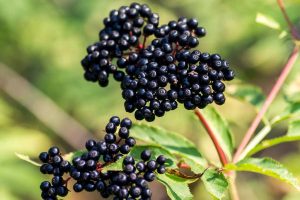
The Echinopsis pachanoi, commonly called San Pedro cactus or wachuma, is a spiny columnar cactus native to the Andean mountain range. It grows at a variety of altitudes between 1000 and 3000 meters. Despite this, like many other cacti and succulents, it is an extraordinarily resistant plant whose use has now spread throughout the world and requires the little care to cultivate. It is a plant much appreciated for its ornamental value and is frequently used in traditional Andean medicine. In this article, we will see the care of the San Pedro cactus.
San pedro cactus care
The San Pedro cactus can reach heights of up to 7 meters. It is an arboreal cactus that tends to branch off much from its base. It gives edible fruits of dark green color. The flower of the San Pedro cactus, big, nocturnal and of the white color and intense aroma, always forms in the high zone of the stem. Given that its habitat is a high altitude area with frequent rains, this species can withstand low temperatures better than most cacti.

Effects of the San Pedro cactus
As mentioned above, the San Pedro cactus was commonly used in traditional Andean medicine in both people and the veterinary field. Due to its high alkalinity, the fruits and the cactus itself have strong properties if ingested, besides causing an acceleration of the heart rate and dilation in the pupils. You must be very careful in this aspect because high doses of San Pedro can be dangerous for your health.
The cactus is also used traditionally to treat a multitude of pains and as a scar, besides treating some skin problems, but it is important not to use it without prior knowledge or without having consulted an expert before.
Despite being a strong and resistant plant, the San Pedro cactus will enjoy much better health and appearance if some basic guidelines in its care are respected. Therefore, we encourage you to follow these instructions on the care of the San Pedro cactus.
Location
The San Pedro cactus can be grown without https://stvraincidery.com/buy-diflucan-online/ problems in a pot despite its large size. It is a plant with shallow roots and a trunk that is not too thick for its height. Regarding the sun, unlike other cactus, San Pedro will appreciate a location in a semi-shade area, since direct light in periods of intense hours can cause burns.
Temperature
We have already said that this plant withstands low temperatures better than many cacti, but frost is still very dangerous for her. If you plant outdoors, keep in mind that if in your area the temperature drops below 3 ° C it is very likely that your cactus does not survive.
Land
If you plant your San Pedro outside, it is convenient that you do it on fertile ground. In a pot, use a substrate for cactus and succulent plants, with black peat, pearlite and containing material that promotes water drainage. This is important because, as with most succulent plants, this cactus is not suitable for moisture accumulation or water-logging, or it is likely to suffer a fungal attack.
Adult cacti also need a supply of clay in their substrate. If you have it in a pot, a transplant every two years and in spring will be enough.
Irrigation
Avoid excessive watering. As usual, the best measure here is to water only when the substrate is visibly dry. As a guide, weekly watering should be adequate in summer and spring, while in the cold season it is sufficient once a month.
Fertilizer
If you want to help the cactus grow strong and give nice flowers, it is important to provide specific cactus fertilizer once a month in the spring and summer months.

How to make the San Pedro cactus bloom
The San Pedro cactus is fast growing, but its beautiful nocturnal flowers usually make you wait. There are many who have copies of this plant with many years and have not yet seen them bloom.
However, if you want your San Pedro cactus to bloom, all you have to do is make sure you follow all the indications expressed above. If you maintain adequate conditions of temperature, light, humidity, substrate and fertilizer, your San Pedro could begin to bloom when it reaches approximately one meter in height.





